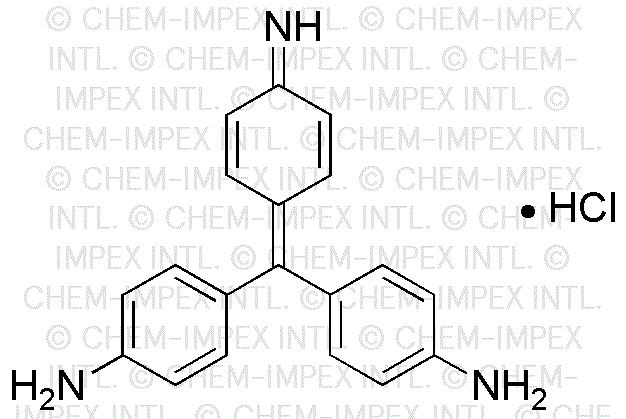Pararosaniline chloride certified is widely utilized in research focused on:
- Textile Industry: It serves as a dye for coloring fabrics, providing vibrant shades that are durable and resistant to fading, making it ideal for clothing and upholstery.
- Biological Staining: In laboratories, it is used as a histological stain to visualize cellular structures under a microscope, aiding in medical research and diagnostics.
- Analytical Chemistry: This compound is employed in various analytical techniques, including spectrophotometry, to quantify different substances in a sample, enhancing the accuracy of chemical analyses.
- Pharmaceuticals: It plays a role in the synthesis of pharmaceutical compounds, contributing to the development of new medications by acting as an intermediate in chemical reactions.
- Research and Development: Pararosaniline chloride is utilized in the development of new materials and chemical processes, particularly in the fields of organic chemistry and polymer science, due to its unique chemical properties.
General Information
Properties
Safety and Regulations
Applications
Pararosaniline chloride certified is widely utilized in research focused on:
- Textile Industry: It serves as a dye for coloring fabrics, providing vibrant shades that are durable and resistant to fading, making it ideal for clothing and upholstery.
- Biological Staining: In laboratories, it is used as a histological stain to visualize cellular structures under a microscope, aiding in medical research and diagnostics.
- Analytical Chemistry: This compound is employed in various analytical techniques, including spectrophotometry, to quantify different substances in a sample, enhancing the accuracy of chemical analyses.
- Pharmaceuticals: It plays a role in the synthesis of pharmaceutical compounds, contributing to the development of new medications by acting as an intermediate in chemical reactions.
- Research and Development: Pararosaniline chloride is utilized in the development of new materials and chemical processes, particularly in the fields of organic chemistry and polymer science, due to its unique chemical properties.
Documents
Safety Data Sheets (SDS)
The SDS provides comprehensive safety information on handling, storage, and disposal of the product.
Product Specification (PS)
The PS provides a comprehensive breakdown of the product’s properties, including chemical composition, physical state, purity, and storage requirements. It also details acceptable quality ranges and the product's intended applications.
Certificates of Analysis (COA)
Search for Certificates of Analysis (COA) by entering the products Lot Number. Lot and Batch Numbers can be found on a product’s label following the words ‘Lot’ or ‘Batch’.
*Catalog Number
*Lot Number
Certificates Of Origin (COO)
This COO confirms the country where the product was manufactured, and also details the materials and components used in it and whether it is derived from natural, synthetic, or other specific sources. This certificate may be required for customs, trade, and regulatory compliance.
*Catalog Number
*Lot Number
Safety Data Sheets (SDS)
The SDS provides comprehensive safety information on handling, storage, and disposal of the product.
DownloadProduct Specification (PS)
The PS provides a comprehensive breakdown of the product’s properties, including chemical composition, physical state, purity, and storage requirements. It also details acceptable quality ranges and the product's intended applications.
DownloadCertificates of Analysis (COA)
Search for Certificates of Analysis (COA) by entering the products Lot Number. Lot and Batch Numbers can be found on a product’s label following the words ‘Lot’ or ‘Batch’.
*Catalog Number
*Lot Number
Certificates Of Origin (COO)
This COO confirms the country where the product was manufactured, and also details the materials and components used in it and whether it is derived from natural, synthetic, or other specific sources. This certificate may be required for customs, trade, and regulatory compliance.


